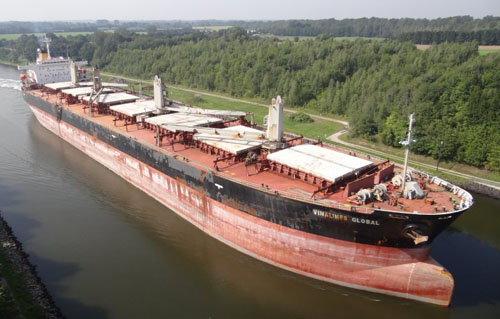The continued decrease in freight and transport demand has pushed shipping firms against the wall. Many of them have gone bankrupt, while others have had to sell ships to pay off debt.

In mid-2016, the Viet Hai Shipping and Real Properties Corporation (VSP) board of directors decided to stop operation because of huge losses. The company’s stockholder equity had become minus VND1.8 trillion by the end of 2013.
After selling all of ships, it still had accounts payable of VND2.7 trillion and fell into insolvency.
Vietfrach, with 50 years of experience, also reported a loss of VND14.79 billion in 2015 for the second consecutive year.
Nosco has reported a minus profit due to the demand decrease and freight plunge. The company had reported an accumulative loss of VND3.1 trillion by the end of the first quarter and accounts payable of VND5.3 trillion.
At a shipping firms conference held recently, Trinh Quoc Dat, chair of the Diem Dien Transport Association in Thai Binh province, said some vessels had to stay ashore for 25 days to wait for one shipment.
Meanwhile, the freight rate is too low: VND70,000 per ton for shipping from HCMC to Hanoi.
| The continued decrease in freight and transport demand has pushed shipping firms against the wall. Many of them have gone bankrupt, while others have had to sell ships to pay off debt. |
According to Dat, the vessels in circulation are examined by state management agencies regularly, but goods for carrying are scarce. Vietnamese shipping firms cannot compete with international firms.
Financial costs are burdening shipping firms. In 2009-2010, when they borrowed money from banks to buy ships, the market interest rates were sky high at 20-22 percent.
A firm reportedly borrowed VND15 billion to build a 3000 CV ship worth VND20 billion. It has paid VND16 billion in principal and interest so far, but still owes VND25 billion to banks.
A senior executive of Vinalines commented that the shipping market has never been so bad before. In general, a downturn only lasts six years before the prosperity comes back. However, there has been no sign of recovery, though the current downturn period began in 2008.
The senior executive said Vinalines has sold six vessels to stop losses. The vessels were all over 20 years old, and they could not be used effectively. Most of the vessels were inoperative, but the company still had to pay money for maintenance.
At the conference, Deputy Minister of Transport Nguyen Van Cong said the freight rate decreased sharply partially because of the unhealthy competition among shipping firms.
As firms tried to force the shipping fees down to scramble for clients, this gave golden opportunities to foreign firms.
“If Vietnamese shipping firms continue lowering fees, they will all sink together,” Cong said.
Kim Chi / vietnamnet